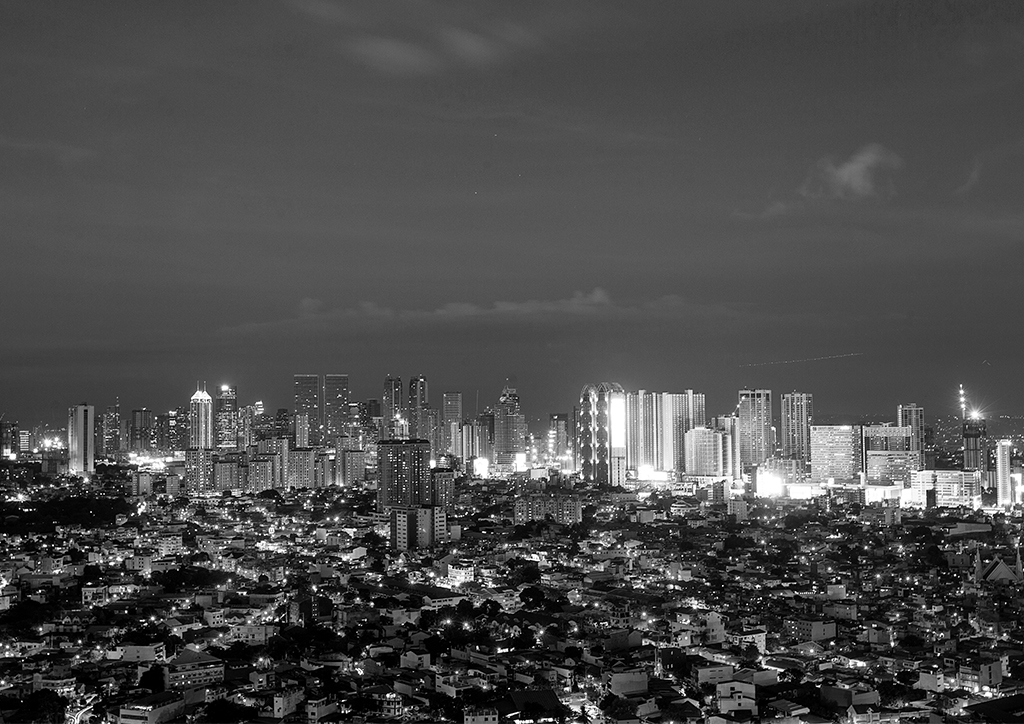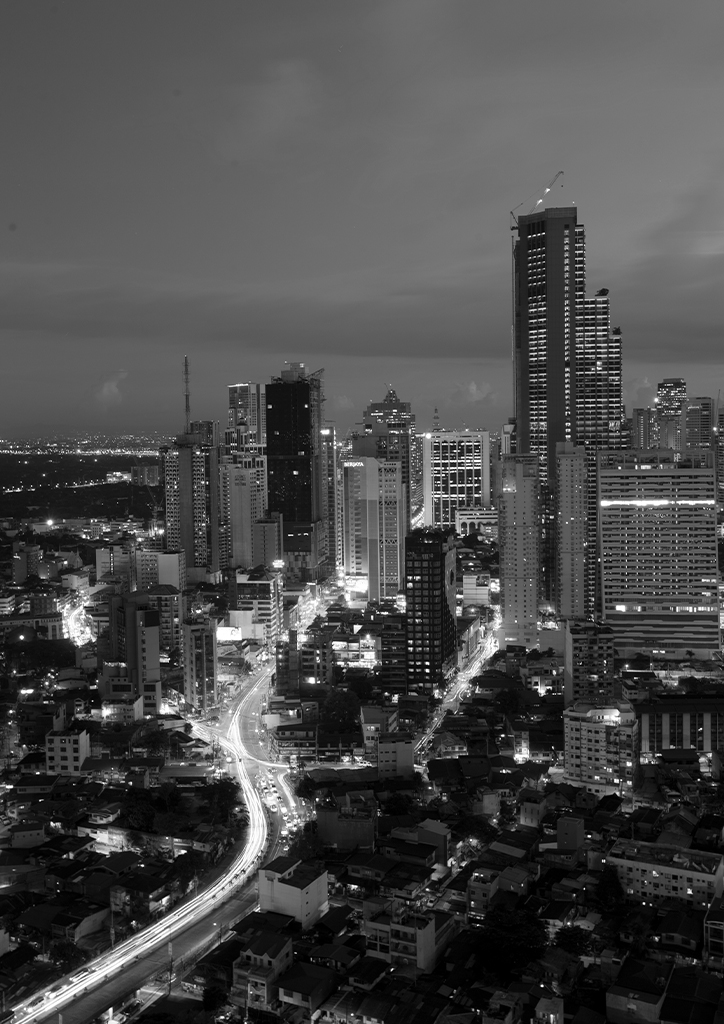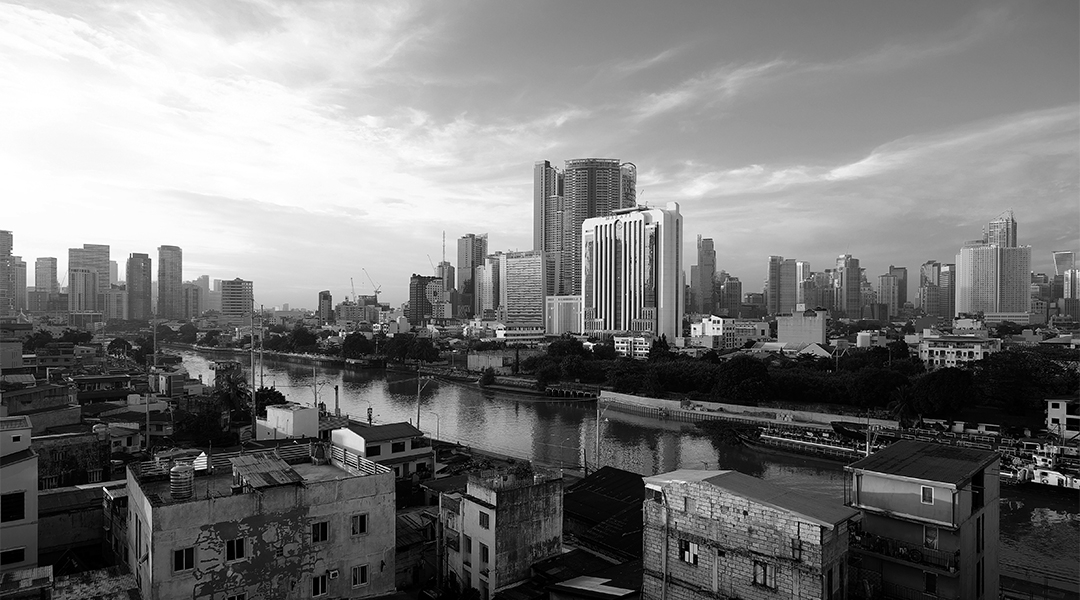Stalwarts of the local architectural community have been steadfast in pointing out the Philippines does have its own design characteristics for structures. Frequently, iconic houses, restored facades, and public edifices that draw on one or more vernacular traditions are cited, alongside, or conflated with an occasional colonial exemplar, such as the Earthquake Baroque and Hispano-Asiatic insinuations of Miagao, Paoay, and Intramuros as well as the tropical adaptations of heritage homes in Pampanga and around the shores of Laguna de Bai. As the arguments go, there is a sufficiency—nay, some profess in the classrooms or rail against critics, an abundance, of functional and aesthetic elements ranging from Cordilleran roofing and jointing techniques, to the villa-cum-bodega conveniences of many a haciendero’s bahay na bato, to Maranao okil carvings, which all constitute our collective fount of intellectual resources for building. When skillfully incorporated into modern cement-glass-and-steel housing, the resulting structure would make up our nationalistic answer to the mass-produced “Balinese”, “Italian,” or like a certain doughnut brand, “Country Style” architecture, to which my mind retorts, which country? As an urban planning scholar, I have extended this same rhetoric spatially in my imagination, to envision what Filipino design and building tradition might look like when writ large enough to fill the expanse of an urban area.
By simple multiplication, we would end up with neighborhoods of roomy, rain-and-wind resistant single-detached houses, with airy modern lines, sometimes gaudy in terms of hues and curlicues (just look at our jeepneys), and fructiferous gardens, occasionally overdone with mini-grottos or a collection of jars, horticulture, or statuary. But the world’s most memorable and unique cities are neither mere iterations nor magnifications of a nation’s household-level iconography. Like all masterpieces of art, music, or literature, they display sequence, hierarchy, measured variety and climax, all within a coherent frame recognizable, without too much effort, by common people. This then, is the issue I will tackle: What are the pragmatic ideas that we might draw upon from the historic givens of our culture, and that of Southeast Asia, which can be employed to create a Filipino city?
Seed settlement
If other cultures have their geomancies and ancient building traditions to refer to, might the Filipino society not have its own equivalents? Or might we not develop our own philosophy of placement? Chinese planners have their feng shui, which teaches that south-facing locations, closed squares, embracing waterways, and an avoidance of the straight and sharp will make for an auspicious settlement, as built for instance in the headquarters of the Hong Kong Shanghai Banking Corporation. In the same way, design professionals from India and Southeast Asian countries with a marked Hindu and Buddhist influence like Cambodia and Myanmar employ vastu shastra (science of architecture), oft appropriating the mandala, a circle within a four-gated square representing the universe, in which a variety of other shapes with religious meanings, scenes, or figures may be further inscribed, and thereby impart to the site their potency and protection, as in the case of the Angkor Wat or the Mandalay Palace.
But in the Philippines, the most apparent city-building tradition from olden times is the plaza complex, rooted in the old Western tradition of the Roman fortified camp (which at times became a town) and still more profoundly, in the grid layout of Greek city-states. This lack of hoary Asian-ness so appealing to tourists is nothing to be ashamed of here because the accidents of history have endowed the Philippines with a different parentage. As the historian F. de Coulanges narrates in an 1864 account, the founding of a city during the centuries of Rome’s Empire was always a religious act, endowed with its own mysticism that sought to dedicate places to one or two among a pantheon of deities, echoing in hindsight the way pre-Filipino animistic tribes sought to supplicate the diwatas of certain natural locations; even thence has there never been a lack of similar place-specific ritual engendered in later generations of Filipinos. Where it remains in the Philippines therefore, this Latin legacy bequeathed from Rome to Spain to the Philippines through the Laws of the Indies, and consisting of a central, rectangular public space diametrically fronted by town hall and church, can be accepted as a seminal feature of Filipino urbanism. It seems to have been recognized as such a practical feature even post-independence settlements like General Santos City and Maharlika Village (a Marcos era community for Muslims) were designed with a quasi-plaza in the población, the center of the settlement. To its orthogonal core of streets, other built-up elements and motifs can then be appended. Radiating from this point in all directions, let us consider now other conceptual sources that can be used to assemble the substance and form of the Philippine city. Three principles suggest themselves based on the Philippines’ and Southeast Asia’s material culture and social development: (1) fluidity in layered space; (2) weather-resistant, multi-functional centers for gathering, (3) and a tension between unembellished versus ornamented infrastructure.
Ripples in the flux
Pre-colonial Southeast Asia, with the exception of northern Vietnam, was influenced in varying degrees by Indian notions of spirituality and governance, which tended to see the universe as a multi-layered realm, with levels above and below the earth, to which humans might ascend or descend, depending on what merit or demerit they had earned in life. There is enough anthropological evidence to show that such ideas of hierarchy were imperfectly adopted by several ethnic groups, with planes of existence of skyworld and underworld ranging from four each in North Luzon to as many as seven tiers among tribes in the Visayas and Mindanao. But these layers were neither as rigid as their Indic progenitors nor understood as one-way destinations like the Christian heaven or hell; rather, they were inhabited by divinities who came and went, to bestow their blessings or curses upon mortals. Despite centuries of colonization, and the overlays of Roman Catholicism and Islam, Filipino lived spaces may yet be read in terms of this archaic, relaxed layering, where the spaces built by the well-to-do, the struggling middle, and the massive underclass interpenetrate and pile upon one another. There are exceptions, like the enclaves of Rockwell or Forbes Park, but over time, even gated subdivisions yield to urban renewal, outside traffic and intermittent commerce, and there has never been any rigid, spatial apartheid. This idea of moving through multiple media in our collective subconscious has much potential as a rule of crafting physical space, and I believe it remains untapped or unarticulated. If beyond the hardcore of the Greco-Roman/Hispanic grid we construct for more inclusive, urban rings or a ripple pattern out of the viscous flux that can accommodate different people, of different means, or at different stages of their lives, then we shall be building an emancipative urban area, or at least one that privileges place accessibility and social mobility over fixed exclusivity and class bondage. Such a form would still be stable insofar as it grows through decades-long, drawn–out undulations of development, punctuated by the bulk of condominiums and shopping centers, or other flotsam that could mark an otherwise shifting landscape.

Central spaces for refuge and conviviality
Digging once again for the region’s cultural roots, we note from the accounts of European mariners and the verifications of later urban scholars that the region was characterized by Nusantara (Malay for “archipelago”) urbanism. That is, unlike the moated citadels of Beijing or Ayutthaya, settlements in maritime Southeast Asia were simply characterized by a distinct palace called the kraton or the istana, and a bustling port (bandar) and sometimes a nearby fort (kota). No other spatial regularities were consistently observed—nor were they needed, for ancestral Filipinos and their Malay cousins were a peripatetic lot, moving between coast and hinterland, and trading, raiding, and intermarrying from island to island, tarrying only in town to mingle, or to seek refuge among kindred souls during inclement weather or when attacked by outsiders. Although physically less recognizable than the complexes of more settled and populous civilizations, settlements did mushroom across coastal regions, and offered ready sites upon which colonizers could build their more orthodox four-walled houses and fortresses.
While Filipino urbanism tradition has been influenced by Western ideas in the intervening centuries, the same minimalist tendency to build multipurpose centers has persisted. It continues to be a cost-effective and socially-supportive strategy for a developing country with an archipelagic disposition. From the humble basketball court to the covered multipurpose hall, the locals must have their shelters from the monsoon and the tropical heat, in every barangay, if possible. The sparseness of these structures is not due to municipal budget constraints, but to their function as undivided gathering places where citizens can come together in the gregarious manner Filipinos are known for. Hence, the evacuation center-cum-school gym is never just a silungan (refuge), but is also a tagpuan (meeting/date place) or for the youth, and tambayan (hangout place). The owners of big-box malls know this by intuition, hence their success in supplanting the traditional open-air plaza with air–conditioned premises where consumerism latches onto the natural, light-hearted sociability of a population of citizens, most of whom are under 25 years of age. The trappings of fine-grained urban spaces and parade grounds are not for these youngsters. The functionality, accessibility, and attractiveness of space are more important. In Philippine cities, there is an opportunity for elaboration of this element as a standard of indigenous urbanism since planners have to decide to which degree a neighborhood might be particularized, rather than be left to its own devices.
Between Brutalist and “Borloloy” Urbanism
Aside from the loosely-coupled neighborhoods and places for public assembly, let us then also consider here the unspoken biases in infrastructure, especially the large-scale connective roads, tunnels, flyovers, and nondescript government offices that dot the cityscapes. At first glance, one might dismiss these as products of Japanese-style urban engineering (after all, Japan’s government does build a substantial share of our infrastructure). That would result in the flat, brutalist default of Philippine public works. However, given enough time and opportunity, urban designers in the bureaucracy will find some way to co-opt hordes of school children or paint companies to splash the drab gray columns and institutions’ walls with colors and messages of peace and fraternity (Camp Aguinaldo), the dignity of labor (beneath the EDSA Makati flyovers), or just some sea creatures sprinkled with vague, artsy utterances (along EDSA southbound). Add to these the signature street furniture of certain politicians, like the Y-shaped columns of waiting sheds in Rizal province, and my pet peeve: the gradual crowding out of Rizal Park and Quezon Memorial Circle’s greenery with objets d’art, and one will have enough evidence for another Filipino urbanism pattern—the abhorrence of voids.
I would, however, describe this as a tension, not always negative, in Philippine cities. Like the impulse of boors to write graffiti, this tension betrays the desire of citizens to express themselves. As with all such drives, it should be governed and channeled, possibly to outlying areas and islands that could use creative assertions of civic presence. If there is too much “borloloy” or ornamentation, then urban design slips from baroque to grotesque. From an urban planning perspective, the key to balancing substance and void in large or small urban infrastructure cannot be the responsibility of the architect alone, for it requires strict controls of proportionality to be maintained long after the lifetime of its creator, thus the transmission of authority and expertise to successive generations of design professionals. One might consider the laudable efforts of the MMDA to install vertical gardens on tunnel walls and flyover pillars, as well as landscaped planting strips and roundabouts á la Singapore—but will these be maintained after a decade or two? After the terms of several chairpersons? After finances are realigned? It is the long-term standard of urbanity then, that needs to be safeguarded, the rational and sensitive use of space that tempers the citizens’ inclination to artistic self-indulgence. Filipinos might call upon the ancient Greeks in defense of inherited urbanism, for archaeologists in recent years have proven the classic buildings and statuary of Hellas were once painted in garish colors too, and only over centuries have acquired the dignified patina of weathered alabaster. But unlike the Greeks, centuries from today, the faded rainbow cosmetics of our cities would only reveal the less exquisite, ashen grittiness of aged concrete; ergo the need for more deliberate craftsmanship in the present.
What about the slums?
A casual observer of Philippine cities will note that informal settlements still proliferate at the periphery and in the neglected districts of major metropolitan areas. By their ubiquity, do they not make up the essence of the Filipino urbanism repertoire we are trying to elevate to complete praxis? In a qualified sense, they do. In my fieldwork, I have observed slums consist of replicas of the quintessential bahay kubo, that cultural symbol that is the building block of the traditional village, whether erected amidst rice fields, cantilevered over riverbanks, or planted above the tides of the littoral. In most such settlements, there is also a sari-sari store, usually in a frontal location, that functions as a node for gathering, information exchange, and as a checkpoint where informal watchmen might accost intruders. Typically too, impoverished settlements make use of G.I. sheets for roofing, with used tires and hollow blocks to weigh them down against typhoons. Though these practices may seem makeshift or ad hoc, they are consistent within the national borders and different from the village layouts and thatching or roof-tiling traditions of communities in other Southeast Asian countries, poor or not. In this sense, despite its abject state, the Filipino informal settlement possesses its own nascent physicality, which mirrors the principles mentioned above. This is by no means a justification for the perpetuation of such squalor but an acknowledgment that there are shared place-making values at work here—values that become behaviors of prioritizing practical, protective building, socializing, and at least when the local fiesta comes around, beautifying physical space. Nevertheless, the township that consists solely of wooden huts is a thing of the past, and contemporary designers of prospective Philippine cities should not relent in their efforts to uplift such slums, absorbing the latter into a more durable urban substance, and designing social justice and inclusiveness into city form.

What would the Filipino city look like?
Having argued thus far for what I consider to be the first principles of Filipino urbanism physicality, I suppose I ought to venture a sketch here, to put my money where my mouth is. The ideal Philippine city would be a place of high mobility for all citizens. Getting around on foot, by mass transit, or on ferries and aircrafts between islands would be efficient and affordable, all in support of regional traditions of interchangeable residency and innate companionability. Such urban areas would also be compact in their physical footprint, not for lack of skill or resources, but because ostentatious building tradition would be deprioritized in favor of practical multi-functionality. Where spectacle could be deemed purposeful, it shall be done in the grand manner, and always balanced with functionality. The usual design standards for tropical climate and coastal locations shall continue to apply, with local variations answering to prevailing winds and terrain features. As for distinct and monumental features beyond those heritage houses and places of worship already in existence, the clean lines and floating illusion of Leandro Locsin’s Cultural Center of the Philippines, the pyramidal greenery of the Mañosa Brothers’ San Miguel Corporation Headquarters, and the biomimetic asymmetry of Ed Calma’s Mind Museum are good models to start with, not only as architectural icons but as site planning and location-responsive components of the metropolis.
But to build a genuine city that would represent Filipino urbanism is not enough. It is an effort that must be sustained by generations, especially in the face of a global tendency to produce theme-park cities that look and feel alike, but lack the delight only authentic, native place-making can bestow. I end, therefore, with an imperative to those who would plan and build our cities using a homegrown, spatial syntax: Filipinize! Every assemblage of monuments, buildings, streets, parks, markets, and landscape should fill our senses, and speak to us in a language that stirs us to the fullness of civility because it has drawn from the plenitude of our place-making lineage.
This article was first published in BluPrint Volume 2 2017. Edits were made for BluPrint online.
READ MORE: (Euclidean) Planning is dead. Long Live Urbanism.
Photographed by Ed Simon



